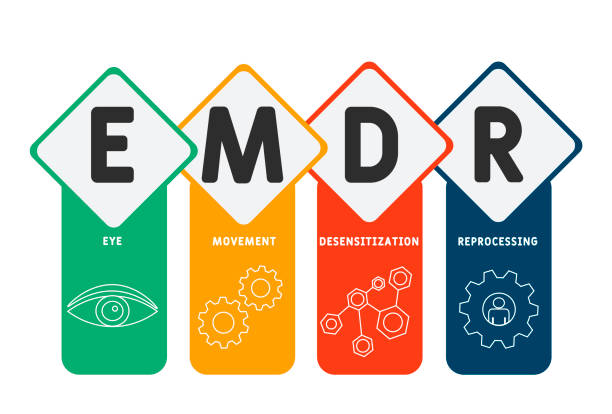Trauma Is More Than Just Survival!

Trauma leaves more than just painful memories—it can fundamentally reshape how a person experiences the world. Whether from a car accident, childhood neglect, assault, or prolonged stress, trauma often traps individuals in a state of survival, making it difficult to move forward. Many struggle with flashbacks, anxiety, emotional numbness, or self-blame, feeling stuck in their past pain.
But what if healing was possible—not just coping, but truly thriving? This is where Eye Movement Desensitization and Reprocessing (EMDR) comes in, offering a scientifically backed method to help individuals break free from trauma’s grip and regain control of their lives.
What Is Eye Movement Desensitization and Reprocessing and How Does It Work?
EMDR is a structured eight-phase therapy designed to help the brain process traumatic memories differently. Developed by Dr. Francine Shapiro in the late 1980s, EMDR has since been widely researched and recommended by organizations such as the World Health Organization (WHO) and the American Psychological Association (APA) for treating PTSD and trauma-related conditions.

At its core, EMDR works by helping the brain reprocess distressing memories through bilateral stimulation, such as guided eye movements, tapping, or auditory cues. This allows the brain to integrate past traumatic events in a way that reduces their emotional intensity—shifting the individual from survival mode to a place of empowerment.
From Stuck to Strong: EMDR in Action
Imagine Yemi, a 35-year-old teacher who survived a serious car accident in Ikorodu, Lagos. Months later, she still feels panic whenever she hears screeching tyres, avoiding driving altogether. She has nightmares, anxiety, and a deep fear of losing control. Traditional talk therapy helps her understand her fear, but it doesn’t fully erase the distress.
After several EMDR sessions:
- She can think about the accident without overwhelming fear.
- The nightmares stop.
- She regains confidence in driving, allowing her to regain independence.
Sarah’s experience is not unique. Studies show that EMDR significantly reduces PTSD symptoms in fewer sessions compared to traditional therapy. One meta-analysis found that over 77% of individuals with PTSD experience significant symptom reduction after EMDR treatment (Shapiro, 2018).
The Science Behind EMDR’s Effectiveness
Trauma memories are often stored in the brain in a way that keeps them highly distressing and unprocessed. When triggered, these memories resurface with the same emotional intensity as the initial event. EMDR helps by engaging the brain’s adaptive information processing system, allowing traumatic memories to be reprocessed and stored more healthily.
Research suggests that it works by:
- Reducing activity in the amygdala (the brain’s fear center).
- Strengthening rational processing in the prefrontal cortex.
- Helping the hippocampus correctly integrate past trauma into long-term memory.
This process transforms the way the memory is experienced—it no longer feels like a fresh wound, but rather a past event that no longer holds power.
Beyond PTSD: Who Can Benefit from EMDR?
While EMDR is well-known for treating PTSD, it is also effective for:
- Anxiety and panic disorders
- Depression linked to traumatic experiences
- Phobias (e.g., fear of flying, medical trauma)
- Complicated grief
- Childhood trauma and attachment wounds
- Performance anxiety (e.g., public speaking, test anxiety)
Many individuals report feeling emotionally lighter, more in control, and less reactive to past pain after completing EMDR therapy.
Addressing Common Concerns About EMDR
1. “Do I have to talk about my trauma in detail?”
Not necessarily. Unlike traditional talk therapy, EMDR does not require clients to verbalize every painful detail. The focus is on reprocessing the memory internally while guided by a therapist.
2. “Does EMDR work for everyone?”
While highly effective for many, results vary based on individual factors. A trained EMDR therapist can assess whether this approach is the right fit.
3. “Is EMDR hypnosis?”
No. Clients remain fully aware and in control throughout the process. It simply helps the brain heal naturally, much like how the body recovers from a wound.
Moving From Surviving to Thriving
Healing from trauma is not just about surviving—it’s about reclaiming your sense of self, feeling safe in your body, and living a life not defined by past pain. EMDR provides a path to this transformation.
If you or someone you know is struggling with trauma, consider reaching out to a qualified EMDR therapist. Healing is possible, and with the right support, moving from survival to thrival can become a reality.